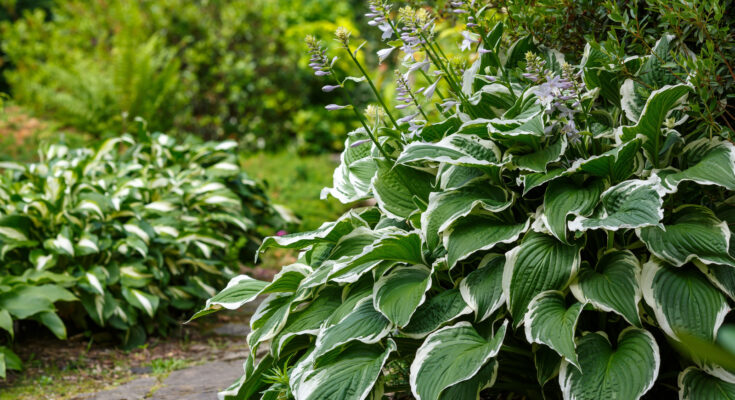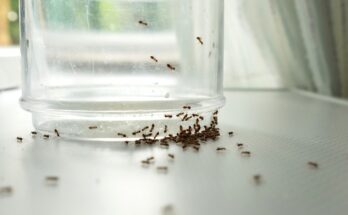The Dazzling Flowering Companion That’s Perfect For Brightening Up Your Bed Of Hostas
If you’re dreaming of turning your garden into a lush oasis full of life and deep green foliage, hostas might be your new best friend. These leafy showstoppers bring texture and life to the party to make a shady corner pop. They’re a low-maintenance, popular staple that returns every year once planted. Also called plantain lilies, their large leaves are cherished for their looks, and they pair well with companion plants, including trees, flowers, and shrubs. If you need ideas for hosta companion plants, look no further than the camellia, a flowering shrub that’s beautiful and long-lived.
You can successfully grow and care for hosta plants in zones 3 to 9, making them a versatile choice for gardeners across the country. There are several types of hostas to choose from, based on your gardening skills, soil composition, and aesthetic preferences. What’s consistent is that hostas like shade rather than sun, and they prefer well-draining, moist soil.
As a companion plant for hostas, camellias bring a pop of color while sharing similar sun, climate, and soil preferences. Ideal growing zones depend on the variety, but camellias usually grow in zones 7 to 10 with some options being hardy in zone 6. There are more than 250 varieties of these beautiful winter flowers, some of which love shade as much as hostas. Common Japonica camellia varieties do well under draped sun, but if you’d like something more unique, look at varieties like ‘Setsugekka’ and its delicate white flowers or ‘Buttermint’ with stunning white-yellow, creamy, and dense double petals. Some colorful pink-red options include the ‘Leslie Ann’, ‘Pink-a-Boo’, and ‘Nuccio’s Bella Rossa’.
How to grow camellias and hostas as companion plants
Companion planting is beneficial to your garden because it allows you to conveniently pair plants that enjoy similar conditions. In addition, it’s a way for plants to help each other grow by providing physical protection, keeping pests away, or preventing weeds. Hosta plants can help you grow and take care of camellia plants thanks to their large leaves, which cover the ground and help keep weeds in check, preventing them from taking over.
To create a beautiful garden display, it’s best to plant hostas and camellias about 3 to 5 feet apart to give them space to spread. Camellias are shrubs that can grow up to 25 feet but are more often 6 to 12 feet tall. Even large, mature hostas typically stay within 30 inches of the ground but spread out nearly 6 feet wide. To make the pair look cohesive, plant a camellia shrub as a “main event” and surround it with hostas. For example, plant one camellia shrub with four hosta plants surrounding it to create a lush design.
Plant hostas and camellias in a tree-covered area of your garden in a spot where they’ll receive some filtered sun and partial shade. You can plant them in raised garden beds filled with well-draining soil and organic matter like compost. Although hostas can be planted throughout the season, the ideal time is in spring, when there is more water in the ground and no chance of frost. Outdoors, camellias are best planted in fall or spring, so you can plant both of them together in the spring to make the task easier.



